Getting our Hands Dirty: Soil Science 101
Posted in Horticulture on May 5 2015, by Lansing Moore
Sonia Uyterhoeven is NYBG‘s Gardener for Public Education.
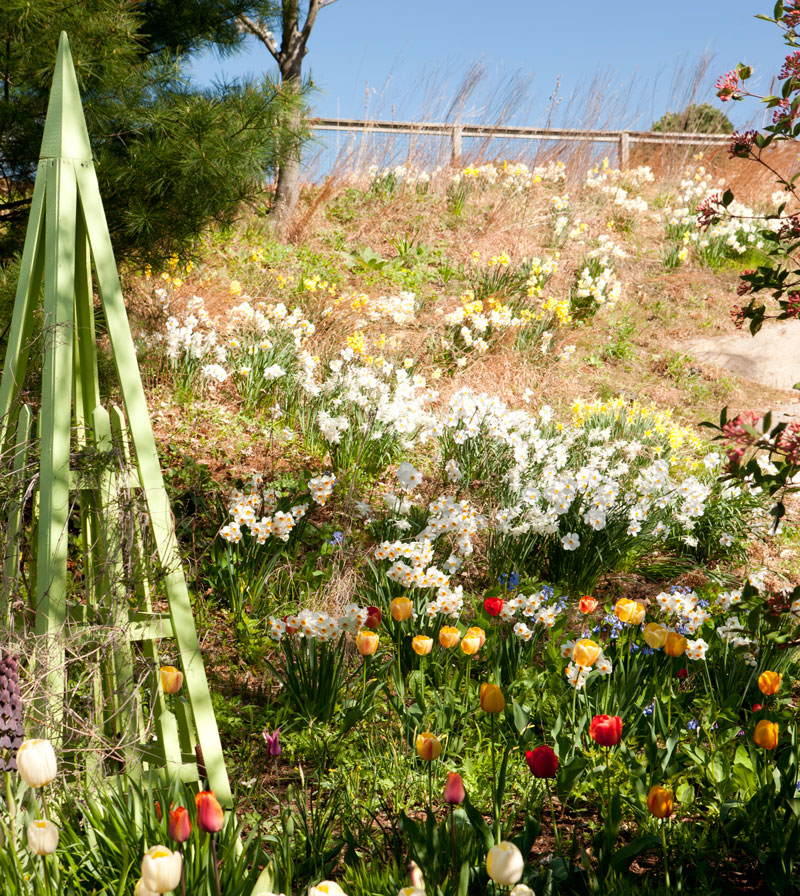 In a previous blog a few months ago, we explored the interdependency of plants, insects and birds. When I was at New England Grows, I was reminded of plant’s interdependency with soil. This relationship was sensationalized in 2006 with the publication of Jeff Lowenfels and Wayne Lewis’s book Teaming with Microbes: A Gardener’s Guide to the Soil Food Web.
In a previous blog a few months ago, we explored the interdependency of plants, insects and birds. When I was at New England Grows, I was reminded of plant’s interdependency with soil. This relationship was sensationalized in 2006 with the publication of Jeff Lowenfels and Wayne Lewis’s book Teaming with Microbes: A Gardener’s Guide to the Soil Food Web.
I remember when Lowenfels came and spoke at The New York Botanic Garden. He was one of many proponents for healthy soils. T. Fleisher, Elaine Ingham and James Sottilo were just a few members of the healthy soil brigade who were working the speaker circuit, educating and informing us on their work on soil microbiology, compost, compost tea, and soil restoration.
At New England Grows, the Foreman of the Grounds at Brooklyn Botanic Garden, Chris Roddick, gave an informative talk that took me back to the heydays when soil was exciting and alive. Roddick started with a reminder of what we often do wrong: over-fertilize or fertilize without a purpose, over-sanitize (by removing leaves, etc.), create mulch mounds, drive heavy equipment up to the base of trees, and garden in the rain.
Roddick then launched into a discussion of plant exudates and how plants are active participants when it comes to creating their surroundings. Root exudates are compounds that are secreted into the soil by the plant’s roots. Research has been conducted on exudates and findings indicate that they serve multiple purposes. Secretions play both symbiotic and defensive roles in the immediate area surrounding the roots, known as the rhizosphere.
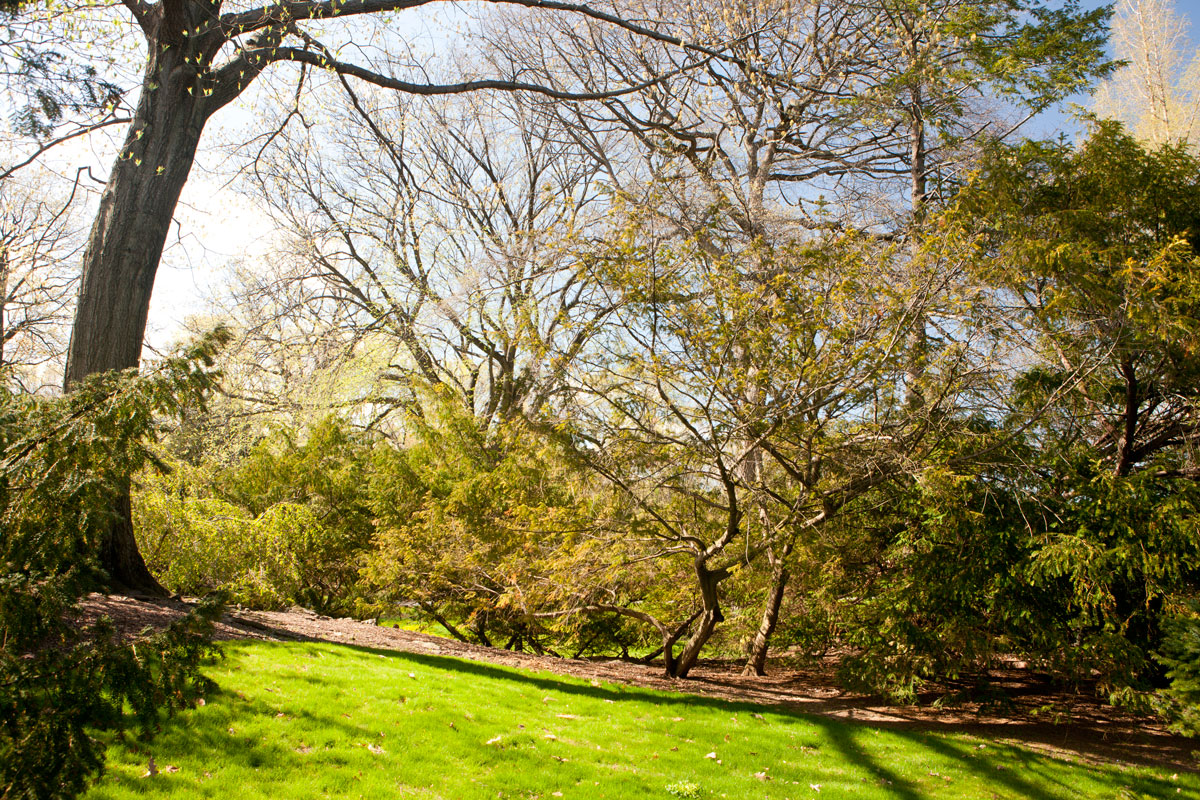
Some antimicrobial exudates fight against pathogens; others maintain good root-to-soil contact, which is crucial for the plant’s survival in drought conditions. Roots need to fend for themselves by fighting neighboring plant for nutrients, water, and space. Some exudates have allelopathic properties that deter or stunt competition. Exudates also feed the microorganisms present in the soil, who in turn break down nitrogen and nutrients into forms that can be absorbed by the plant. Life in the soil is a two-way street.
Through the process of photosynthesis, plants combine carbon dioxide and water to create carbohydrates (food) and other carbon containing compounds. Generally about 50% of these carbon compounds are stored in the root systems. Anywhere from 5% to 40% (usually closer to 20%) are released into the soil as exudates. Roddick told a story how older Douglas firs (Pseudotsuga menziesii) were known to place up to 80% of their carbohydrates into the soil as exudates. The hypothesis behind the findings was that the firs were priming the soil for the next generation.
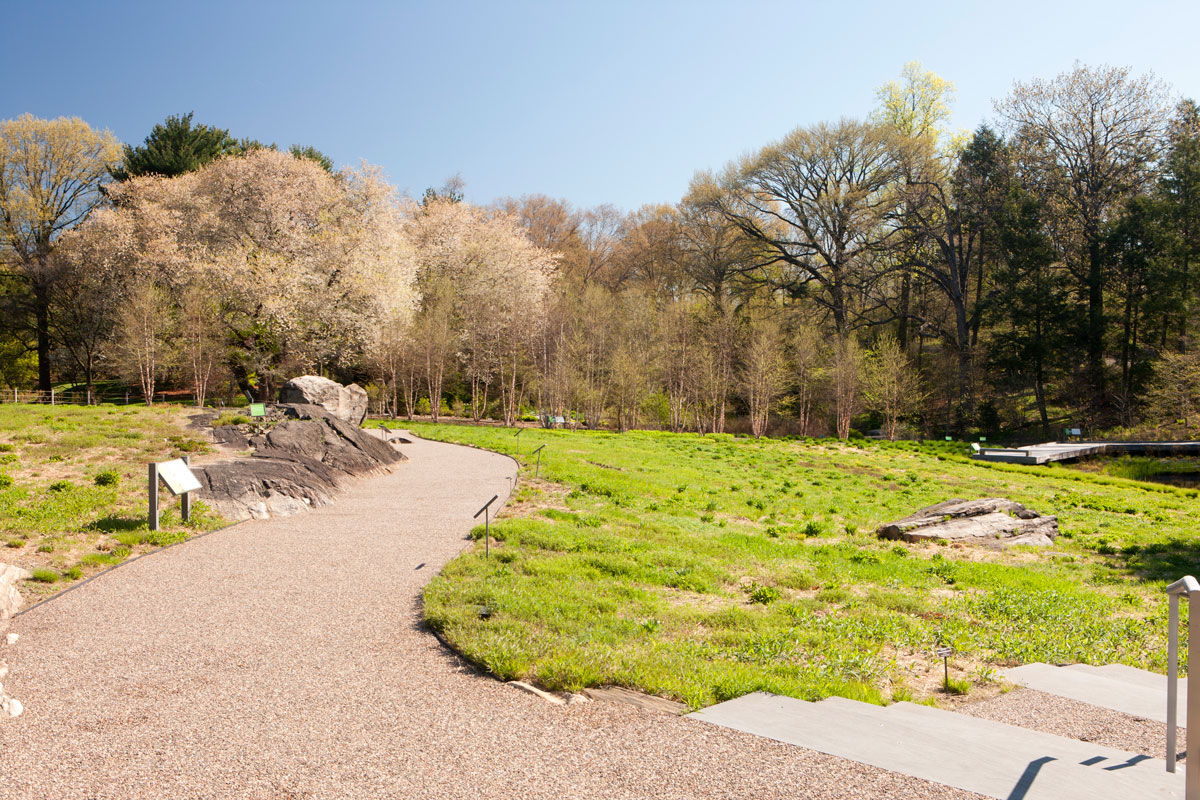
Roddick reminded us that soil was formed from rocks breaking down through a process of freezing and thawing; temperature and time. Add plants into the equation and you have organic matter (plants decomposing and breaking down to form humic acid). It takes 500 to 1000 years to build an inch of soil. 1000 years for an inch, and then we have the ability to strip it bare in an afternoon when a backhoe loader drives in and we start to build on a site.
For plants this spells disaster. The majority of root growth occurs in the nutrient-rich top layers of the soil. When contractors remove topsoil to build – they essentially remove all the nutrients that plants need to grow; destroying the soil texture as they go. Roddick made an apropos analogy with intensive farming. While farming philosophy is certainly changing, one of the adages of intensive agriculture was to treat the soil as an inert medium—where we take out and then add what we want back, controlling the environment. Sustainable practices are now throwing a curve ball into this farming practice with their alternative approach. Emphasis on crop-rotation, intercropping, and raising animals for manure are three trends on the rise.
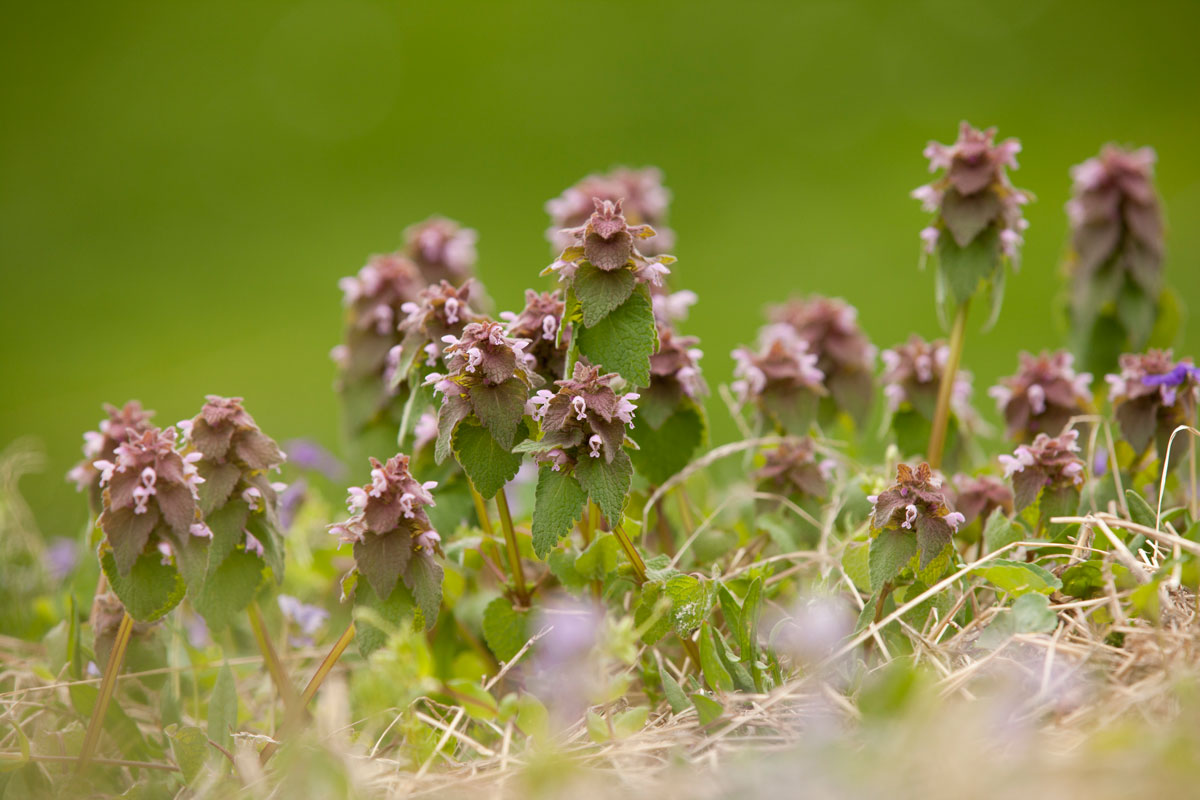
After reminding us why understanding soil and treating it with respect is so important, Roddick provided us with practical tips for tending our gardens. Soil aeration was high on his agenda. Healthy soil is generally broken down into 45% mineral matter, 5% organic matter, 25% air and 25% water. Soil organisms and plant roots need both oxygen and water to thrive.
Soil compaction is a pressing concern, both in a botanic garden or park where there is heavy foot traffic, as well as in our backyards where construction takes its toll. At Brooklyn Botanic Garden they minimize compaction by laying a foot of mulch down and then plywood atop to prevent compaction when they have heavy machinery working on the grounds. Roddick reminded us that prevention is easier and less costly than remediation.
When soil is compacted, we use core aeration for the lawns and air spades for shrubs and trees. Organic matter is added to the compacted area to help add structure to the soil. For labor intensive planting job at the Garden, we use plywood planting boards. The boards evenly distribute our weight, alleviating some of the strain that we are placing on the soil as we work the beds. Fences are the best protection to keep people from walking on the beds.
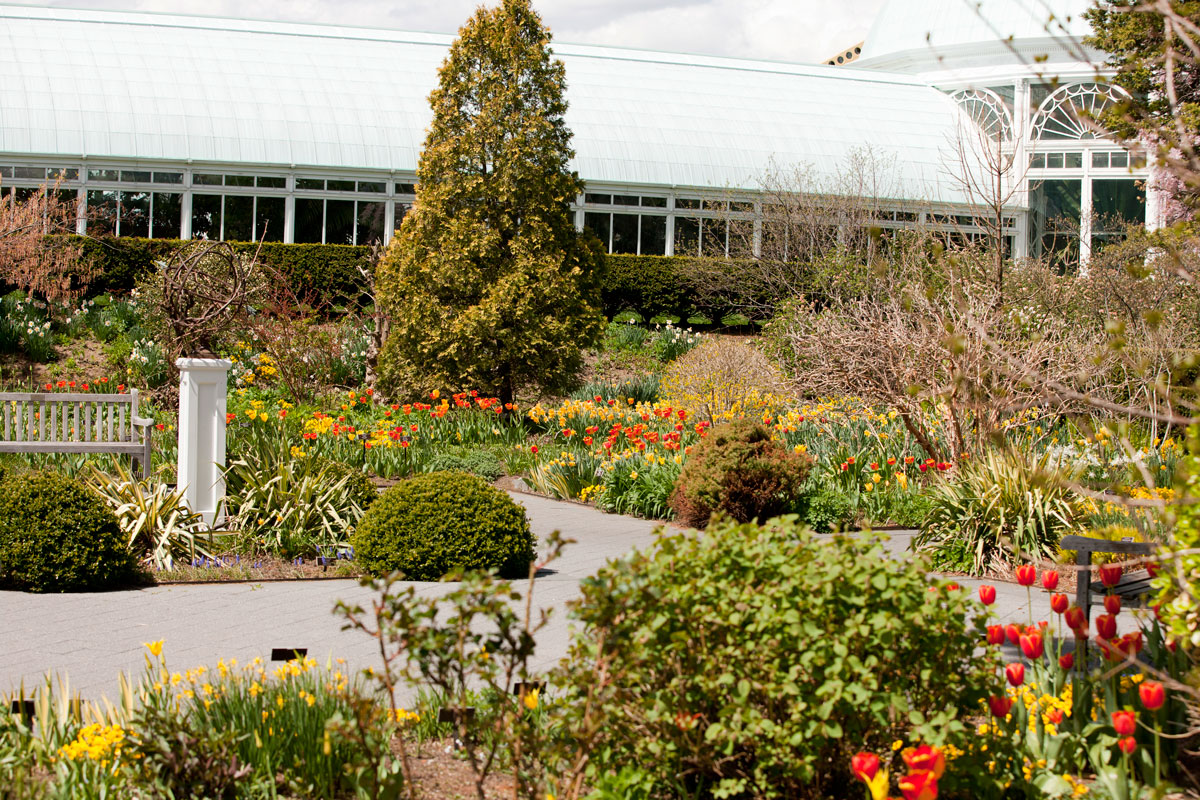
Organic matter is an important component in every garden. Roddick had a catchy pun, “Leave the leaves—that’s why they are called leaves.” Mother Nature understands the concept of recycling. She does it every year when the leaves fall off the trees in autumn, dropping to the ground and adding a natural layer of mulch that will be broken down over the course of the year and transformed into organic matter which feeds the soil and its micro-organisms.
Aside from good old-fashioned compost, Brooklyn Botanic Garden is having good success using compost tea on their lawns and in their Conservatory on tropical plants. We use it here on our lawns along with other smelly concoctions of seaweed and kelp. Do not over-sanitize your garden. Roddick suggested bringing nurse logs into your landscape or leaving fallen trees to slowly decompose and provide a home for wildlife, insects, fungi, and seedlings. This is a practice that we have upheld in the Thain Family Forest and there is no shortage of wildlife and new growth.
Roddick’s parting words were a sanguine reminder that we should view our landscapes as ecosystems that are process-based and not product-based. The general consensus these days is that we have done enough harm to the environment and ‘quick fixes’ where we rush in with an arsenal of chemicals are no longer viable. If the soil is truly alive—and it is—then we have to treat it as part of the larger complex ecosystem.

